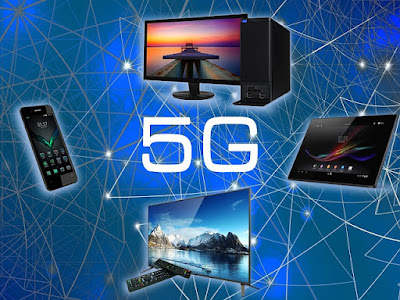What is 5g Technology and its application?
5G is the fifth generation of wireless mobile telecommunication standards. It succeeds the 4G/IMT-Advanced standards of cellular connectivity. The 5G specifications will provide minimum data rates of 1 Gbit/s for tens of connections with significantly lower latency (i.e., less than 5 ms in most cases) as compared to currently used 4G, LTE or Wi-Fi. The latency is critical due to the fact that in most cases it takes longer than 5ms for a human brain to register an event (see ).
The first phase of 5G specifications got completed by March 2018 and the commercial deployment is expected to take place in 2020 and it did as expected.
5g technology will help people to make their communication very fast and they can enjoy the services like virtual reality (VR), Augmented Reality (AR), and Artificial Intelligence (AI) which we cannot think about before.
5G speed:
Starting at 100 Mbps, data speeds upwards of 1 Gbps are targeted – with as much as 10 Gbps likely down the road. Latency in the single-digit millisecond range.
5G Technology:
The 5th generation wireless technology, in simple terms, is a set of standards that will allow you to make calls from your cell phone while riding in a self driving car or from an AR virtual reality headset. The networks for 5G are called “all IP”. In other words all traffic goes over the internet protocol and it no longer requires large towers with equipment racks full of gear to provide good service. Today’s wireless networks have a lot of overhead to handle the variation between different types of devices, their locations and even how users demand service at any given moment. This overhead contributes significantly to the cost and complexity of today’s wireless infrastructure compared with fixed broadband systems, which make the same amount of capacity available for each user on a network. 5G systems, using IP technology, will be less expensive to build and maintain than today’s 4G cellular systems.
5G Low Latency:
Low latency is critical in several types of applications such as real-time interactive services like telemedicine and autonomous vehicle operation where delay can create serious safety concerns. The low latency requirement mandates that no more than ~10ms network control or signaling latency should be present between any two points in the network. Packet transport delays must also meet stringent requirements with maximum latencies on the order of 1 ms (which translates to an upper limit at around 100km/h). Network designers will have to carefully consider the trade-offs between latency, capacity and network efficiency.
5G Network Architecture:
The image below shows the 5G system architecture. The user equipment (UE) is expected to be low power with local intelligence, while the network would consist of many more eNBs. This reference model can potentially support all existing wireless communication systems that are based on OFDM modulation including LTE/LTE Advanced/NR as well as current Wi-Fi systems. A key goal for NR will be compatibility with earlier releases of LTE which should enable it to leverage a large amount of 3GPP work in addition to making it easy to deploy successor technologies in adjacent spectrum bands or coexist with other services such as TV broadcasts which are allocated fixed frequency channels.
5G Spectrum Bands:
This diagram below shows the different spectrum bands that will be used which includes 3.4-3.8 GHz for very high capacity and very low latency communications, 7-8 GHz of unlicensed spectrum to facilitate coverage up to 1 Gbps user data rates as well as new global frequency band designations in the 24-86 GHz range with corresponding channel bandwidths from below 1 MHz to 100 MHz or more. In some areas of the world, there will likely be a need for millimeter wave spectrum technology. The radio access network (RAN) is expected to be deployed over a large number of frequency bands with a wide variety of channel bandwidths ranging from a few dozen megahertz to a few hundred megahertz. – 5G Technology –
5G Security:
With the advent of IoT and machine to machine technologies, security becomes a critical issue for 5g networks. As I have already noted here , “security is no longer an option” if we are going to roll out 5g technology. In this article i will look at some of the different kinds of attacks on 5g networks as well as possible ways to mitigate those risks through encryption, network security appliances etc. The short answer is that there is no magic silver bullet for securing 5G Networks but there are certainly better ways than others that keep in mind the expected rise in attacks when everything from cars, airplanes to smart city sensors are part of the Internet of Things.
Conclusion
In this article I have looked at some of the basics about 5G networks. This is just a short overview and there are many more details which i hope to cover in future articles including security, network architecture etc. In the upcoming series of articles on 5g technology , we look further into the different kinds of attacks as well as possible mitigation causes. I welcome any comments or questions on 5g technology and would be glad if you could share this information with others.


